An evening with chessboxing, the sport that harmoniously combines brain, brawn and absurdity

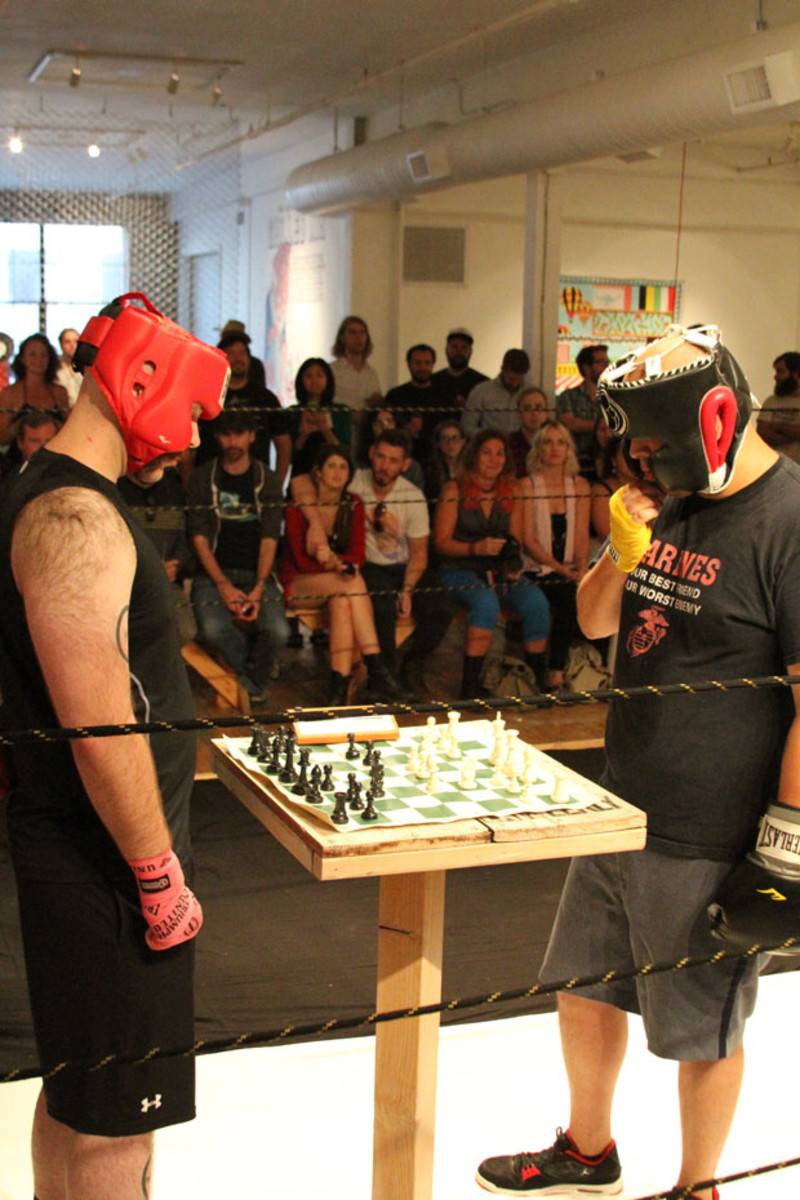
It's fight night in downtown Los Angeles. But all is quiet around Staples Center and Michael "Let's get ready to rumble!!" Buffer is nowhere to be seen. In fact, the city center is surprisingly peaceful on this Independence Day Eve except for a small pocket in an area called the Fashion District. It's here that what can best be described as "Fight Club for nerds" is about to break out. It's Chessboxing and it's weird.
Chessboxing is a hybrid sport where combatants alternate between rounds of boxing and chess, with the winner decided by knock out, checkmate or judge's decision. While it might seem simple enough, I’ll soon find it’s as brutal physically as it is mentally.
When I enter Think Tank, home of the evening's event, I'm initially convinced that I'm either in the wrong place or it's some sort of elaborate prank at my expense. The facility is an art gallery with a well-used, indoor skate ramp (not to mention more than a few wheel marks on the wall indicating some errant tricks) and warning signs that read "Danger Zone: Skateboarders are riding through and can cause injury." But I quickly spot the 6'9", 300-pound Andrew McGregor, head of the Los Angeles Chessboxing Club. So, much to my surprise, I'm in the right place.
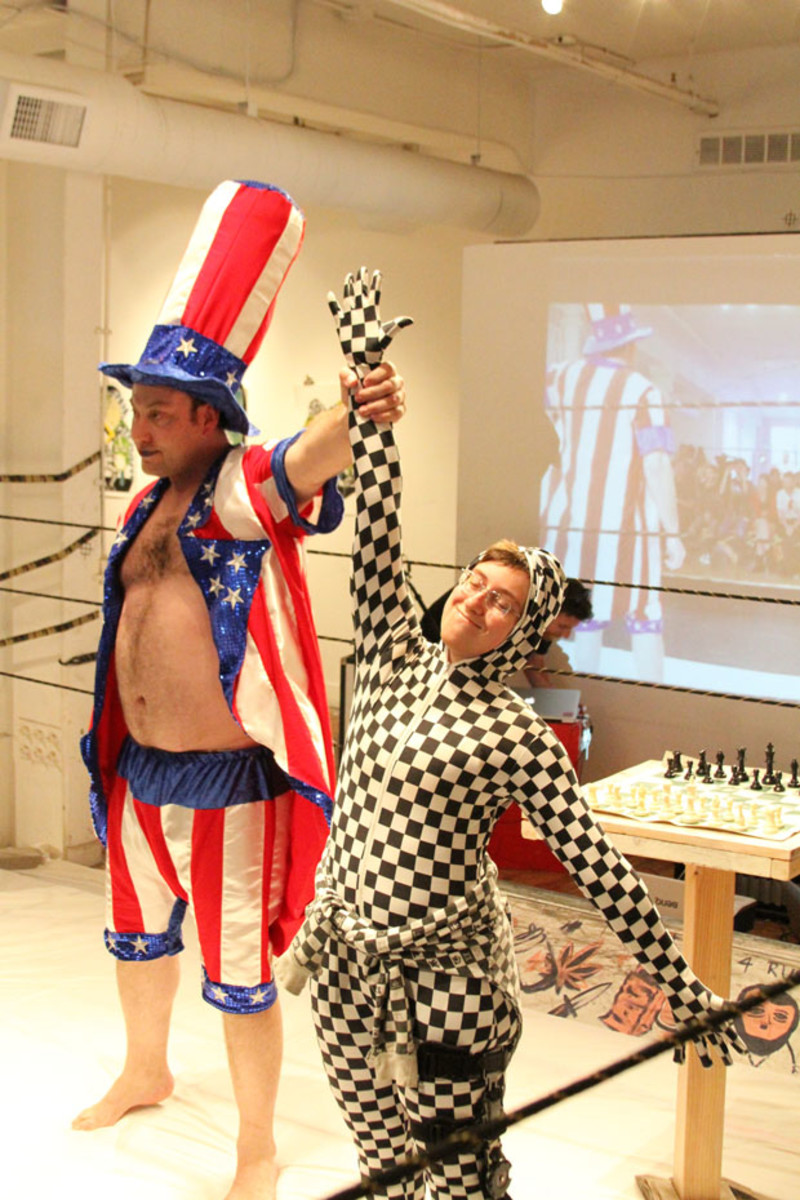
In the spirit of the holiday, McGregor is sporting the star-spangled top hat, jacket and boxing shorts outfit reminiscent of Apollo Creed's from "Rocky IV.” An entrepreneur by trade, the 34-year old brought chessboxing to Los Angeles five years ago after learning about while living in Eastern Europe. In a historical footnote, McGregor fought in the first sanctioned bout in North America, winning by checkmate in the fifth round. But tonight he’ll take on the role as master of ceremonies and boxing referee.
As the crowd begins to file in just after 7 p.m., my perplexed reaction to the scene is echoed by many of the nearly 100 people who will ultimately join me. They too notice the crudely constructed ring, which is really just two-inch foam padding with what looks to be black and white bed sheets spread over the top. The squared-circle is roped off around four conveniently located support columns, with pads tied to each one. The chessboard sits upon a homemade wooden stand. It's not pretty, but it'll suffice.
McGregor clearly gets that chessboxing is as much a sport as it is entertainment. He stands in the middle of the ring and, with a booming voice (the microphone broke), announces the leggy ring card girls with their signs reading "Chess" and "Boxing." Then McGregor introduces the person appropriately wearing a black and white checkerboard body suit. Morgan Mahowald, a two-time Minnesota girls state chess champion, is the chess referee for the evening and provider of the play-by-play. With the audience at a frenzied state, McGregor introduces the first two combatants.
The Undercard
As all chessboxing bouts do, Tony Lugo and Josh Birnbaum begin their five-round match at the chessboard. When they arrive to thunderous applause, both are wearing their boxing headgear but only one glove, leaving the other hand free to move pieces on the board. Following the rules of the game, players are allotted seven-and-a-half total minutes to make their moves. If they use up all their time, the match ends and the decision goes to the judges.
As the chess begins, the DJ pipes in classical music, bringing an oddly sophisticated feel to the moment. A hush comes over the audience as Lugo and Birnbaum start their moves.
"They're fighting over the center," Mahowald announces.
The first round ends and Lugo, a former U.S. Marine and now barista/aspiring writer, has a decided advantage having taken three of Birnbaum's pawns as well as a knight. McGregor hoists the chessboard out of the ring and quickly, the brawling begins.
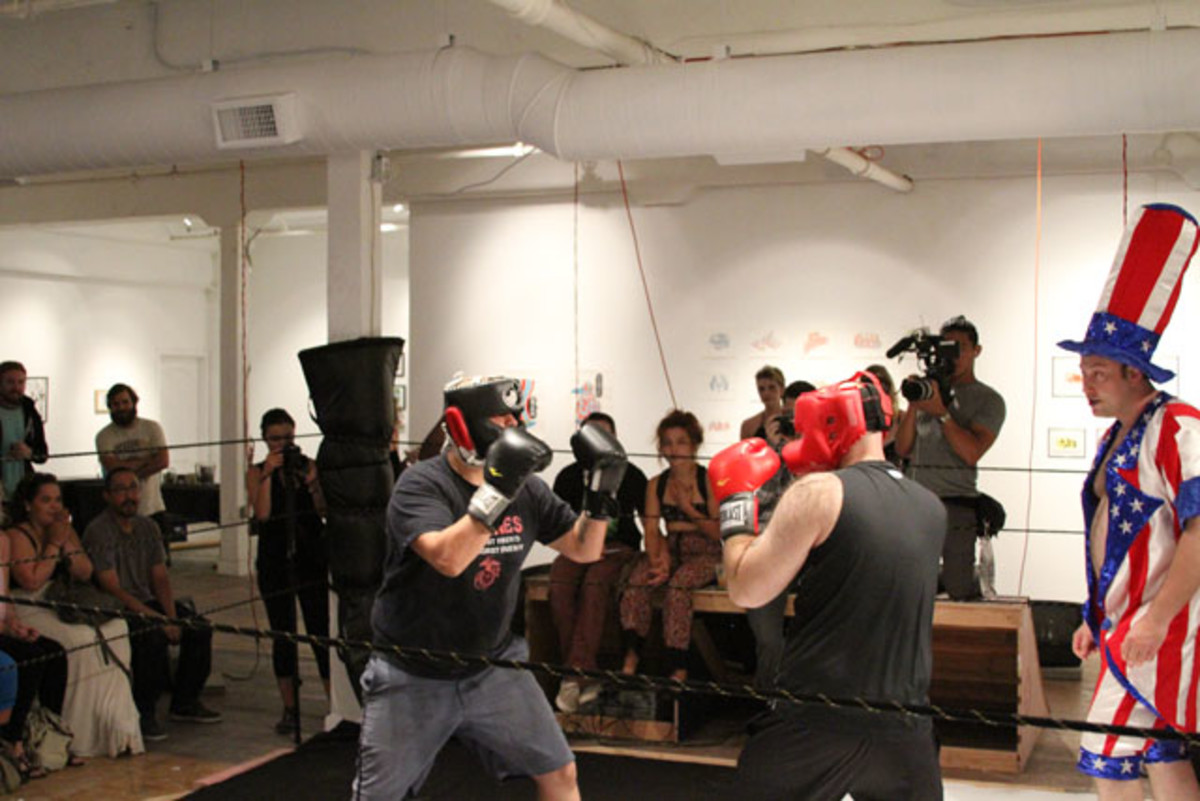
Neither Lugo nor Birnbaum, a bartender with some martial arts experience, are particularly skilled boxers. The two mostly throw looping hooks to the head hoping for a quick knockout. Jabs are few and far between and defense is accidental if nonexistent -- just what the crowd is hoping for.
After the first round, they are both dripping in sweat and breathing heavily. But the transition from boxing back to chess isn't an easy one. They start to make careless and sometimes illegal moves. At one point, Lugo jumps his own pawn, almost as if he's playing checkers. This prompts Mahowald to scold Lugo, saying, "That's not how pawns go," before moving his piece back to its original position.
Lugo, a first time chessboxer, later explains some of his mistakes on the board, saying, "Taking a hit to the side of the head and then trying to make a chess move is a lot harder than what I thought it would be."
After another round of pummeling, including a brief stoppage to ensure that Birnbaum was okay following a Lugo barrage, the final round of chess begins.
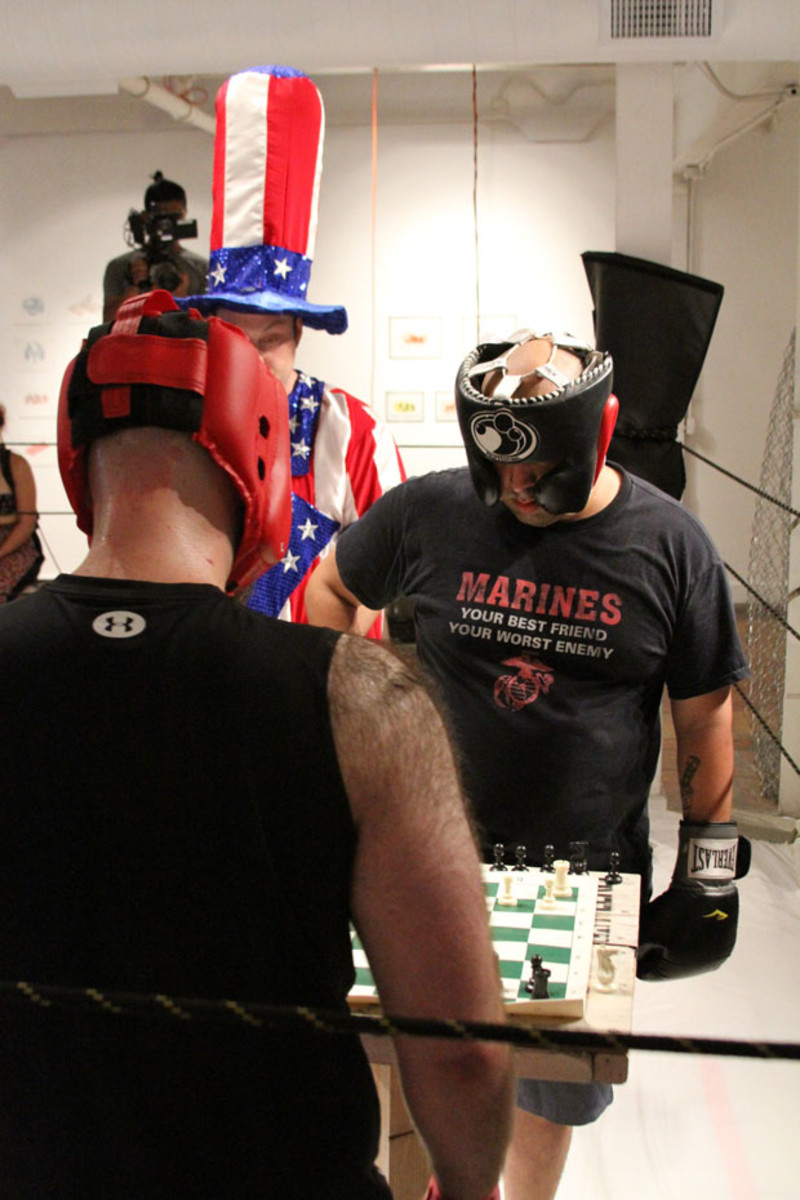
Lugo, who prepared for the bout by shadow boxing in his apartment and playing on Chess.com, has Birnbaum down to just three pawns and his king. As time expires Lugo is declared the winner. For his efforts, Lugo receives a plastic crown from McGregor but no prize money. Rather, his purse will go to the charity of his choice -- the Polaris Project.
The Main Event
While the undercard was fairly even, this fight looks, at least on paper, to be a mismatch. It pits Stefani Pogue, a 5'10" former college basketball player and professional MMA fighter, against the 5'4" RoxannaPinotti. But in chessboxing, brawn can easily lose to brains, so anything is possible.
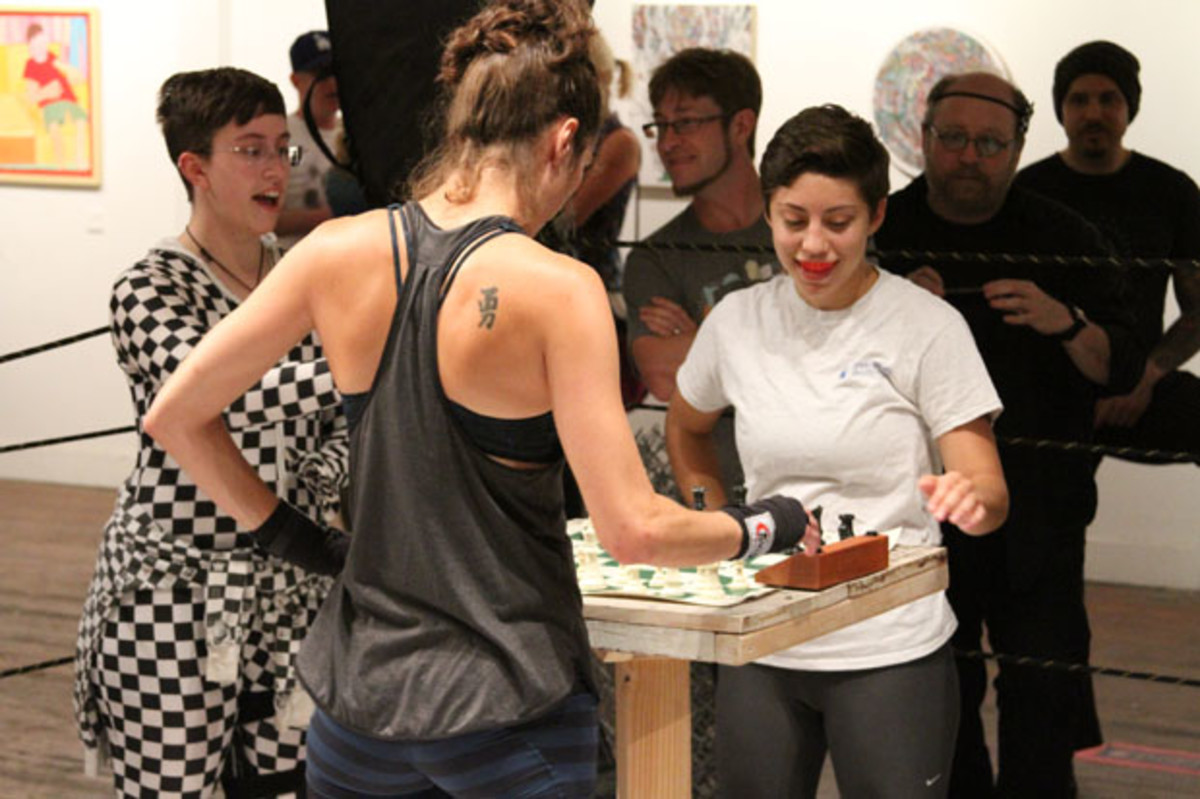
McGregor brings the fighters to the chess board and signals it's time to begin. After a slow start that primarily involves swapping of a few pawns, the women switch to boxing. It's here that Pogue's sizable reach advantage and fighting experience allow her to easily land solid blows to Pinotti's face. But the Argentinian battles, herself landing some nice body shots.
After the round of boxing is done, the chessboard is brought back to the ring. But unlike the first fight when quiet would overtake the room, the crowd is much more rambunctious during the chess rounds. Many begin to chant, "Chess! Chess! Chess!" and after Pinotti swipes Pogue's bishop, a Bronx cheer of "No more bishop!" echoes through the room.
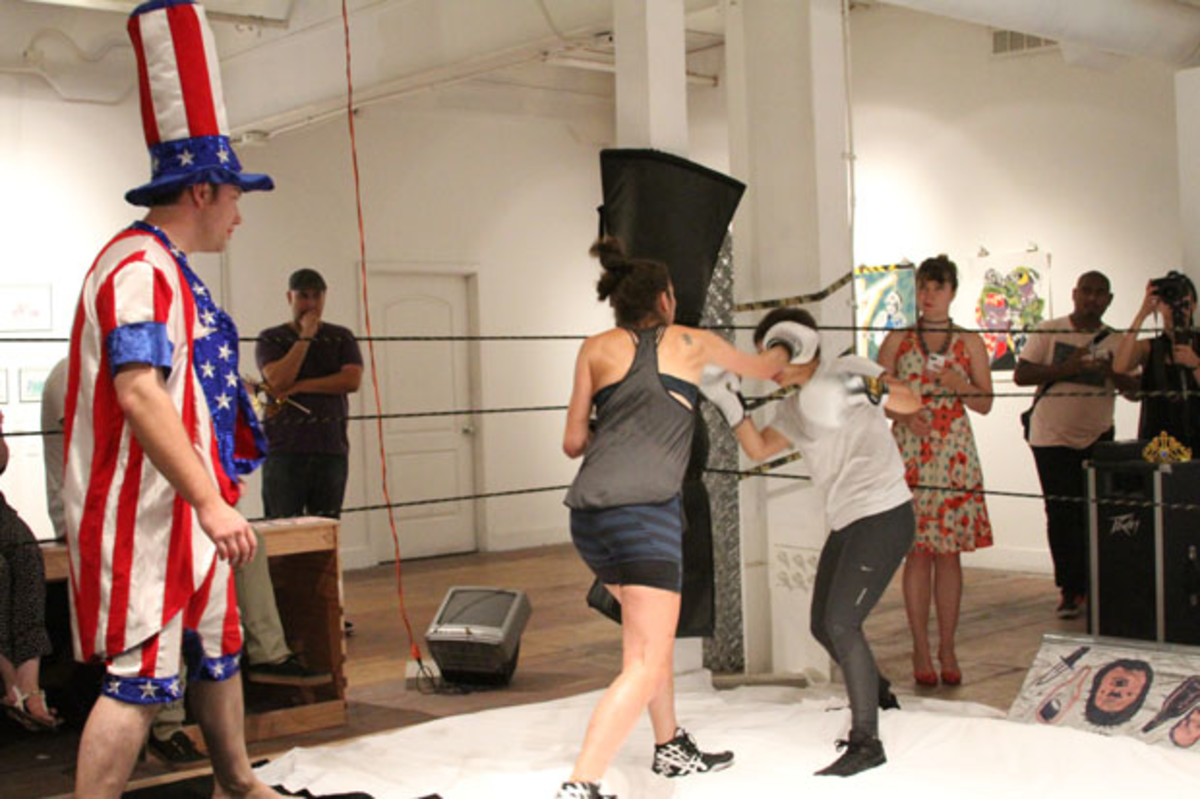
Pogue later explains that it's these elements that make chessboxers "feel like you're in a circus. It's kind of like 'Alice in Wonderland.' It's surreal…the whole thing is odd, which makes it kind of fun."
As the fight continues, it's clear that Pogue is dominating her smaller competitor both in the ring and on the table. And at the end of the seventh round, Pogue has Pinotti right where she wants her. With a pronouncement of "check and mate!" from Mahowald, Pogue (and her charity, the Kilimanjaro Orphanage) is declared the winner.
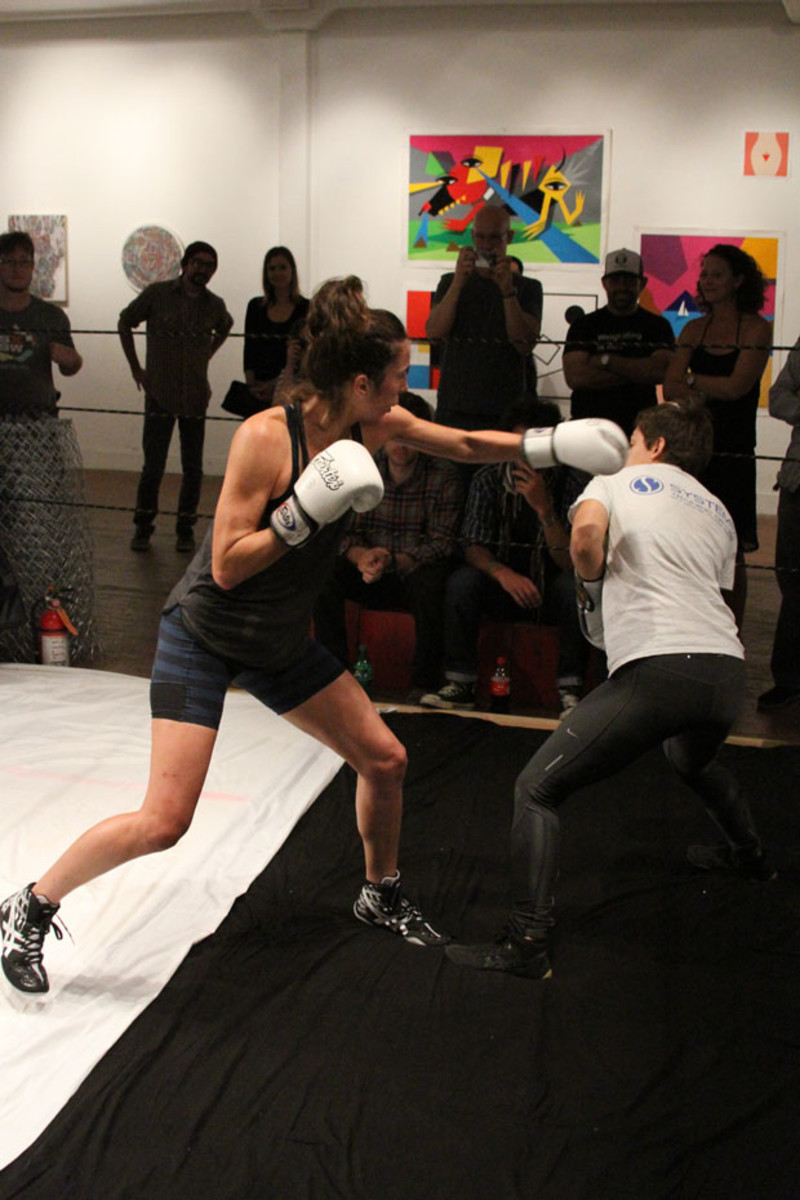
After watching chessboxing, I realize that the two very different disciplines have a lot more in common than I initially thought. Each is about setting up the next move and understanding your opponent's tendencies. In boxing, a couple jabs to the head can free you up for a solid body shot. Chess is about thinking many steps ahead and forcing your opponent to choose what pieces to protect.
As a sport, it's hard to imagine scenario in which chessboxing could turn "Fight Night" into "Fight Knight." But as a curiosity and a spectacle, chessboxing is a knockout.
